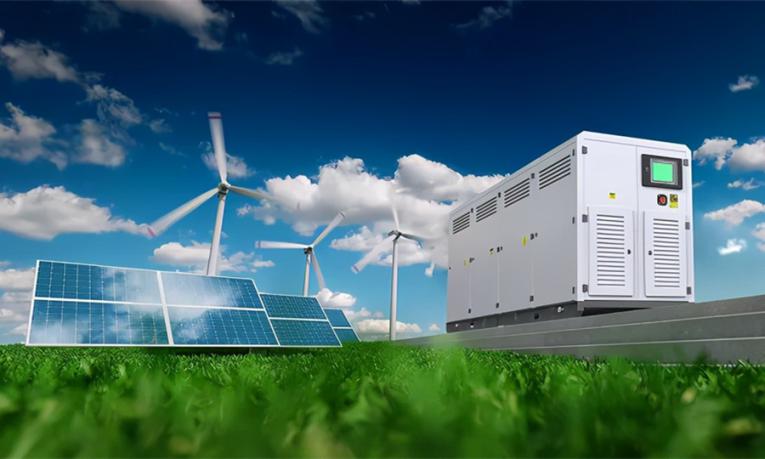Energy Storage Industry Kicks Off 2024 with a Strong Start, Exceeding Expectations in Q1
Traditionally, the first quarter of each year is considered the off-season for domestic energy storage installations in China. However, the first quarter of 2024 has defied this norm, demonstrating robust growth momentum. This not only continues the rapid development of China's energy storage industry in 2023 but also, according to industry data analysis, it is projected that China's new energy storage installations for 2024 will exceed 35GW, marking the third consecutive year where the new installations surpass the cumulative total, highlighting the vigorous growth of the energy storage sector.

Outstanding Q1 Energy Storage Market Data
The latest data released by the National Energy Administration shows that China's new type of energy storage is developing rapidly, with the operational installed capacity already exceeding 35 million kilowatts. By the end of the first quarter of 2024, the cumulative installed capacity of the country's new energy storage projects reached 35.3 million kilowatts/77.68 million kilowatt-hours, an increase of over 12% from the end of 2023 and a staggering increase of over 210% compared to the same period last year.
Data from GGII indicates that in the first quarter of 2024, China's lithium battery shipments reached 200GWh, a year-on-year increase of 18%. Among them, the shipments of power and energy storage batteries were 149GWh and 40GWh, respectively, with year-on-year increases of 19% and 14%. There were also significant increases in the shipments of cathode materials, separators, anode materials, and electrolytes, indicating the comprehensive prosperity of the energy storage battery industry chain.
With the widespread application of renewable energy and the increasing demand for peak shaving and frequency regulation in the power grid, the role of energy storage batteries in the power system is becoming more and more important, and their growth trend is steady. New energy storage power stations are gradually developing towards centralization and large-scale, and the construction of large-scale energy storage facilities is accelerating. The average energy storage duration of new energy storage projects nationwide is 2.2 hours, showing the maturity of energy storage technology and its extensive application.

From a technical route perspective, the 56 new energy storage pilot demonstration projects released by the National Energy Administration cover a variety of technologies, including lithium-ion batteries, compressed air energy storage, and flow batteries, showing the diversified development of energy storage technology. On the corporate side, the profitability of energy storage-related concept stocks in the first quarter of 2024 is generally good, with more than 35% of companies achieving a year-on-year increase in net profit attributable to the parent of over 100%, demonstrating the industry's profitability and market vitality.
Slow Overseas Market Development with Great Potential

Although the domestic energy storage market is strong, the overseas market's development is relatively slow. For example, the new installations in the United States and Germany both declined at the beginning of 2024. However, the pace of Chinese energy storage companies going global has not been hindered, with companies like Contemporary Amperex Technology Co., Ltd. (CATL) and EVE Energy still having strong orders in the overseas market. The competitive edge of Chinese energy storage companies in lithium battery and other energy storage technologies enables them to explore new growth points in the overseas market.
The share of China's energy storage companies in the global market continues to increase, from 31.8% in 2018 to 91.6% in 2023, fully proving the international competitiveness of Chinese energy storage battery companies. With the rise of emerging markets such as Southeast Asia, Africa, and countries along the "Belt and Road" initiative, Chinese energy storage companies are facing more growth opportunities.
According to the European Energy Storage Association, by 2030, Europe will need to deploy about 200GW of energy storage, which is an annual increase of 14GW; by 2050, this demand will reach 600GW, which is an annual increase of 20GW after 2030. The support of national policies also provides strong assistance for energy storage companies to go global, indicating the huge potential for the future development of the energy storage industry.
Summary
In summary, despite some challenges faced by the domestic energy storage industry in the first quarter of 2024, it has shown a strong momentum that is not typical for the off-season. Driven by policy support and technological progress, the energy storage industry has maintained a positive development trend in the domestic market and has also shown strong competitiveness in the international market. With continuous technological advancement and market expansion, the future development prospects of the energy storage industry are very broad.
Daily Chip Model Recommendations
1. TPS65217BRSLR is a single-chip power management IC (PMIC) designed to provide an efficient power management solution for portable electronic devices. It includes a linear battery charger compatible with single-cell lithium-ion and lithium-polymer batteries, dual input power paths, three buck converters, four low-dropout (LDO) regulators, and an efficient boost converter capable of powering two LED strings with up to 10 LEDs each. This PMIC suitable for applications in portable industrial equipment, medical devices, industrial automation, and portable medical devices.
2. TPS5450DDAR is a high-output current PWM converter integrated with a low-resistance high-side N-channel MOSFET. Power consumption can typically be reduced to 18μA by using the ENA pin for shutdown. Other features include a high-level effective enable end, over-current limit, over-voltage protection, and thermal shutdown. It is mainly used in the fields of communication, automotive electronics, televisions, displays, and audio equipment.
3. STM32F030K6T6 is an ARM Cortex-M0 MCU with embedded flash memory and SRAM, featuring a variety of enhanced peripherals and I/O. It includes communication interfaces such as I2C, SPI, and USART, as well as a 12-bit ADC, 16-bit timers, and an advanced control PWM timer. Applications include application control and user interfaces, handheld devices, PC peripherals, gaming platforms, consumer appliances, printers, alarm systems, and HVAC.
4. STM32F407VET6 is a high-performance basic series ARM Cortex-M4 MCU with DSP and FPU, featuring 512KB Flash, a 168MHz CPU, an ART accelerator, Ethernet, and FSMC. It is primarily used in motor drivers and application control, industrial applications such as inverters, PLCs, scanners, HVAC, video intercoms, home audio equipment, and medical devices.









